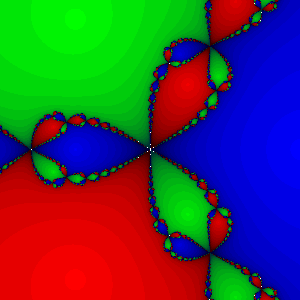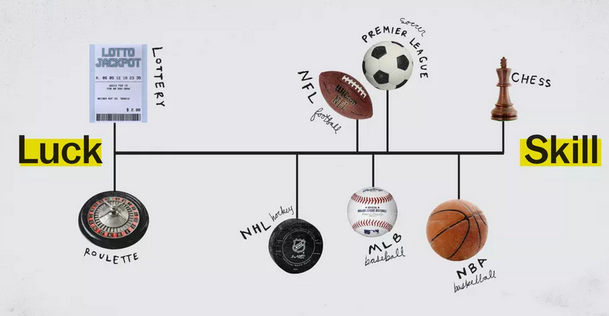This is a repost of a puzzle I created in 2014. I used to post puzzles on my blog, a long time ago!
Rules:
This is a repost of a puzzle I created in 2014. I used to post puzzles on my blog, a long time ago!
Rules:
This is a repost of an article I wrote in 2008, over ten years ago! This is the one that explains where my avatar comes from.
Today, I will explain how I created this:

This is a fractal. A fractal is a pattern that contains smaller versions of itself. But it’s not just any fractal. It’s a fractal I created from something called Newton’s method.
I know that this question has practical and political implications, but for now, I’m treating it as a “just for fun” philosophical question. Just wanted to be upfront.
What is the value of freedom of choice? Does it have intrinsic value, or is its value purely instrumental?
A thing has “intrinsic value” if it is valuable in itself. It has “instrumental value” if it is valuable because it is a means to get something else of value. For instance, suppose we have a choice between mushroom and cheese pizza. This choice has instrumental value, because it’s a means for people to have the kind of pizza they most prefer. But does the choice also have intrinsic value?
Under an initial analysis, I thought the answer was “no”. If I’m presented with a one-time choice between A and B, and I choose A, did the other option B do any good? At least within a consequentialist ethical framework, it sure doesn’t seem like it. After all, option B had no bearing on the consequences.
I find the concept of luck vs skill in games to be fascinating, because the common intuitions are just so wrong. The common intuition is that some games involve more luck, and some games involve more skill. On the extreme end of luck, we have the lottery; on the extreme end of skill, we have chess. The orthodox view was best expressed by a Vox article/video, which included the following image:

The Vox image also shows several sports, and the position of each sport is based on the statistical analysis of Michael Mauboussin. The details of analysis aren’t explicitly described, but it’s basically analyzing the national tournaments for each sport, and estimating how much of the variance in outcome is explained by luck or by skill.
Mauboussin did not analyze chess. Vox added chess in themselves, pulling a claim out of their ass. Without doing any analysis, I can guarantee that if you applied the same statistical analysis to chess, you would not find that chess was 100% skill. The analysis will only show that a game is pure skill if the same people consistently win all their games. I quickly checked the US Chess Championship winners, and while some names show up repeatedly, it is not 100% consistent, and therefore would not be deemed a pure skill game by this analysis.
So what gives? Is the statistical analysis bogus, or is the claim that chess is 100% skill bogus? Trick question. Both of them are bogus.
When we hear two musical notes played together (either in succession, or simultaneously), we often characterize those notes as “dissonant” or “consonant”. But instead of having a sharp dichotomy between dissonance and consonance, it might be more useful to speak of a spectrum between the two. Then, the question before us is how to quantify the dissonance of any pair of notes.
12tone is a cool music theory channel, and he recently published a video discussing the solution thought up by the 18th century mathematician Leonhard Euler. I include the video below, but be warned that I’m going to trash Euler’s answer. I believe that any measure of musical dissonance must, at some point, refer to empirical observations of dissonance. Euler’s answer relies on mathematical supposition, and thus I would deride it as numerology.

Four 45 degree spiral creases
This is going to be one of those origami posts where I talk way too much about math. But before I get to the math, I will explain how you can make one of these things entirely with ordinary arts and craft tools.
“Ordinary tools” is the relevant bit here, since my understanding is that experts in curved-crease origami don’t use ordinary tools, they use things like vinyl cutters. When I first tried making these, I could not find any instructions for how to make these models using ordinary tools (I later found an article by Ekaterina Lukasheva), so when I finally figured out a method, I wanted to share it.
Before we draw the creases directly on the paper, we need to make a template. The template ensures that each of the four curves are identical to each other.
In an earlier post, I talked about the asymmetrical polarization of US congress, and how DW-NOMINATE is used to quantify it. In this post, I’m going to discuss more technical details. I’ll explain why I was initially skeptical, and why I came to accept the argument.
But before I get into the math, I should first emphasize that there are many arguments demonstrating that the US congress has become more polarized, and that the Republican party in particular is more extreme. I think those arguments stand on their own, with or without using any evidence from DW-NOMINATE. You can read some of those arguments here, or watch the Vox video I linked last time. It’s not just liberals who are saying this–one of the big proponents of asymmetrical polarization theory is Norman Ornstein, member of the conservative think tank American Enterprise Institute;
